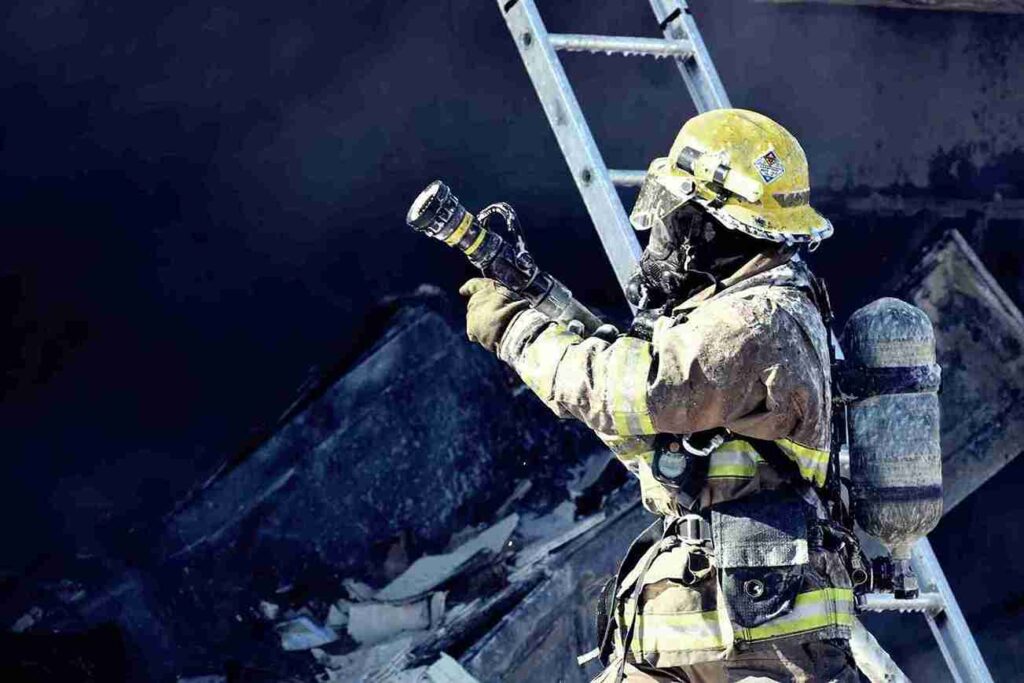Aqueous Film-Forming Foam (AFFF), also referred to as firefighting foam, has long been praised as an essential tool in the fight against flammable liquid fires. Beneath its life-saving potential, though, is a sobering truth: exposure to AFFF poses hidden health risks. This article delves into the depths of these dangers, shedding light on the risks firefighters and communities face.
Understanding AFFF: The Basics
AFFF is a firefighting agent designed to suppress fires fueled by flammable liquids such as oil, gasoline, and jet fuel. It works by forming a film on the surface of the burning liquid, preventing oxygen from reaching the fire and suppressing its combustion. AFFF has been widely used in various industries, including firefighting, aviation, military operations, and industrial settings.
According to the NFPA Journal, studies have shown that AFFF does not deplete the environment. Wherever AFFF is used and not retrieved or removed, it gets washed down a drain into the surroundings.
Moreover, the PFAS compounds remain in them as forever chemicals. The indestructible compounds have found their way into water supplies and soils. PFOS and PFOA are the two main PFAS compounds studied and found in air samples, oceans, and even the Arctic region.
The Chemical Composition of AFFF
AFFF typically contains synthetic chemicals, including per- and polyfluoroalkyl substances (PFAS). PFAS are a group of man-made chemicals known for their water-repellent and heat-resistant properties. This makes them an ideal choice for firefighting applications.
However, the use of PFAS in AFFF has raised significant health concerns due to their persistence in the environment. According to Undark, studies have shown the presence of PFAS or other permanent chemicals in tap waters, too. A recent U.S. Geological Survey study revealed that 45% of the U.S. tap water supply contains at least one forever chemical.
Health Risks Associated with AFFF Exposure
Exposure to AFFF, particularly to its PFAS components, has been linked to a range of adverse health effects in humans. Studies have shown that PFAS can bioaccumulate in the body over time, leading to potential long-term health complications. Some of the health risks associated with AFFF exposure include:
- Cancer: Research suggests that exposure to certain PFAS compounds found in AFFF may increase the risk of various cancers. This can include prostate, kidney, testicular, and bladder cancer.
- Reproductive issues: PFAS exposure has been linked to reproductive problems in both men and women, including reduced fertility, pregnancy complications, and developmental disorders in offspring.
- Liver damage: Prolonged exposure to PFAS compounds can cause liver toxicity and damage, leading to liver dysfunction and other related health issues.
- Immune system disorders: Studies have indicated that PFAS exposure may weaken the immune system, making individuals more susceptible to infections and autoimmune diseases.
Due to these health concerns, many firefighters have even filed lawsuits against AFFF manufacturers. According to TruLaw, the plaintiffs allege that the manufacturers knew about potential health effects. However, they didn’t warn them. Therefore, they were not able to make an informed decision.
Through AFFF lawsuits, plaintiffs claim damages for health problems such as cancer, reproductive issues, and other medical conditions linked to PFAS exposure. The litigation surrounding AFFF lawsuits involves complex legal issues related to product liability, negligence, and environmental contamination.
Some lawsuits have also targeted government entities, alleging that they were aware of the dangers of PFAS-containing foam. However, they continued to use it without sufficient safeguards or disclosure. In these cases, military bases, airports, and industrial facilities where AFFF was routinely used are among the defendants.
As the legal proceedings unfold, there is increasing scrutiny on the regulatory framework surrounding PFAS chemicals and firefighting foams. Government agencies and lawmakers are pressured to implement stricter regulations and guidelines to address the risks posed by PFAS contamination.
The outcome of AFFF lawsuits could have significant implications for the firefighting industry, environmental regulation, and corporate liability. Settlements or court rulings in favor of plaintiffs may change how AFFF is manufactured, used, and disposed of.
The Impact on Firefighters
Firefighters are at the frontline of AFFF exposure, often coming into direct contact with the foam during firefighting operations. Their repeated and prolonged exposure to AFFF places them at heightened risk of developing health problems associated with PFAS exposure.
Additionally, firefighters may unknowingly track AFFF residues in their living quarters. This can further increase their exposure levels even outside of active firefighting scenarios.
As stated in an NBC Montana news article, various studies have shown a higher risk of testicular cancer in exposed firefighters. These studies have shown that rates of testicular cancer in firefighters are 100% higher than in others. Many individuals hold PFAS in firefighting foam responsible for the increased risk.
Also Read: Honda CD 70 2022 Price
Community Concerns and Environmental Contamination
Using AFFF in firefighting activities can also result in environmental contamination, posing risks to surrounding communities and ecosystems. AFFF residues can infiltrate the soil, surface water, and groundwater, contaminating drinking water sources and agricultural lands. This environmental contamination can have far-reaching consequences, affecting human health, wildlife, and natural habitats.
The environmental contamination has also posed a risk to people on Coast Guard duties. An Environmental Working Group article shows that PFAS has contaminated Coast Guard bases. In fact, 24 Coast Guard bases across the U.S. in 2022 were suspected of contamination by forever chemicals like PFAS.
Regulatory Responses and Remediation Efforts
In response to growing concerns over AFFF exposure and PFAS contamination, regulatory agencies and governments worldwide have taken steps to address the issue. Some measures include:
- Phase-out and ban: Several jurisdictions have banned or restricted the use of AFFF containing certain PFAS compounds known to pose significant health risks.
- Remediation and cleanup: Efforts are underway to remediate contaminated sites and mitigate the environmental impact of AFFF residues. This includes groundwater treatment, soil remediation, and monitoring of affected areas.
- Research and monitoring: Ongoing research is being conducted to better understand the health effects of AFFF exposure and develop safer alternatives to traditional firefighting foams. Monitoring programs are also in place to track PFAS contamination and assess its impact on human health and the environment.
To conclude, the hidden health dangers of firefighting foam underscore the urgent need for greater awareness, regulation, and mitigation efforts. Firefighters, communities, and policymakers must work together to minimize exposure to AFFF and address the environmental and health risks associated with its use. By taking proactive measures and investing in safer alternatives, we can protect human health and the environment for future generations.



